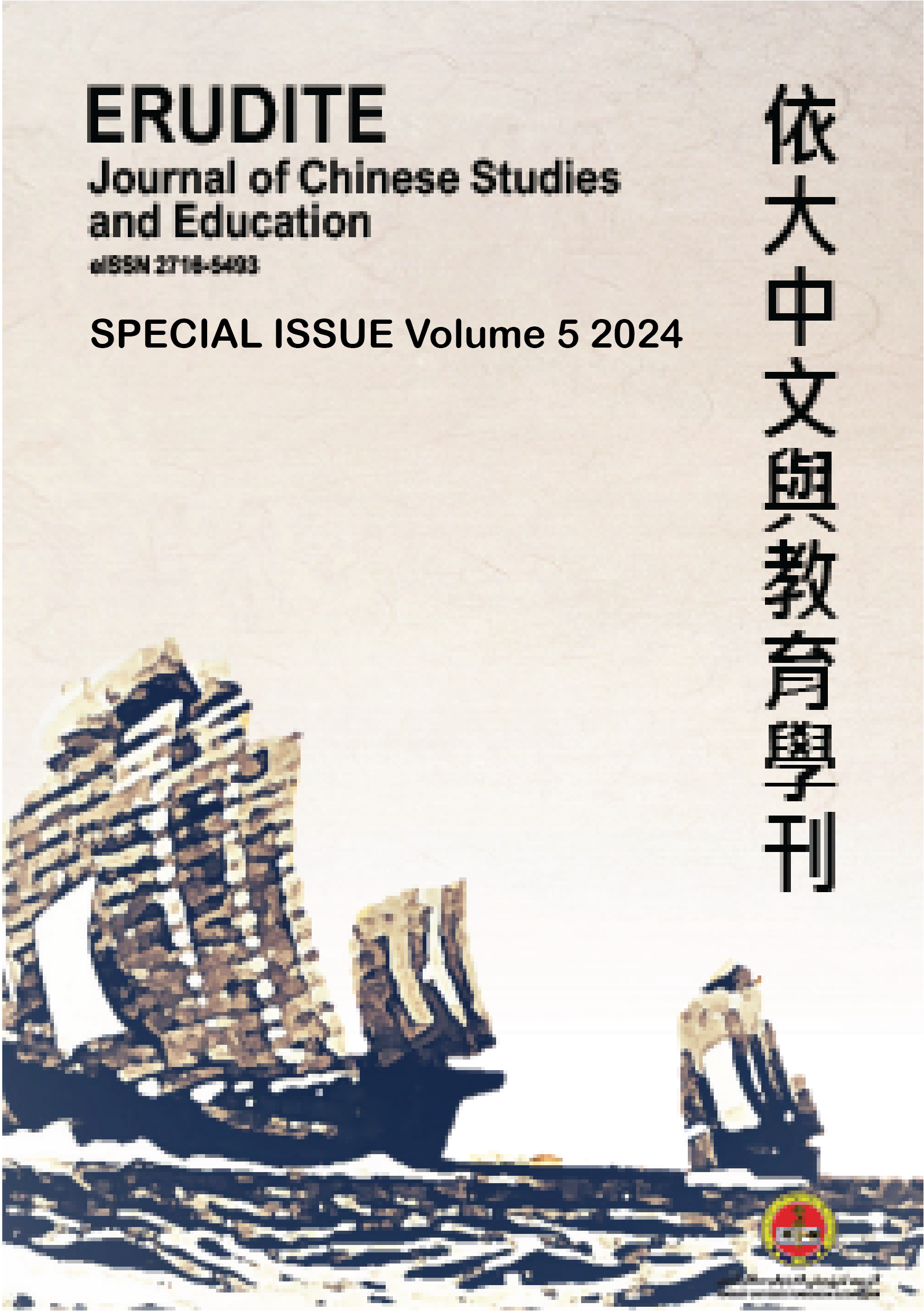鲁迅《古小说钩沉》之辑佚方法与其得失 ——以《冥祥记》之辑佚为中心
The Compilation Methods of Lu Xun's “Gu Xiao Shuo Gou Chen” and its Pros and Cons: with a Focus on the Compilation of “Ming Xiang Ji”
DOI:
https://doi.org/10.37134/erudite.vol5.Sp.1.2024Keywords:
古小说钩沉, 冥祥记, 鲁迅, 辑佚Abstract
鲁迅《古小说钩沉》系古小说辑佚之大成。在《冥祥记》的辑佚上,鲁迅对比群书,对故事中不合情理的地方进行纠正。对于注出《冥祥记》的材料,鲁迅审慎地进行甄别,删除他认为的伪作,以达到去伪存真的目的。此外,他不仅着眼于注出《冥祥记》的材料,也辑入注出他书的《冥祥记》材料。最后,鲁迅连缀散落在各书中的古小说文本,形成更为详尽完整的故事,体现了鲁迅求全责备的辑佚倾向。由此可见,鲁迅的辑佚并不满足于简单的排比罗列,而是基于各种学术判断,对文本进行了殚精竭虑的校订、辑录乃至重组。鲁迅的作法大部分都有可以逆推的坚实依据,但也不无可议之处:一、不加说明地删汰一系列本注出《冥祥记》的文本,然而,有的文本不能完全排除其出于《冥祥记》的可能;二、在连缀撮合间,制造了“鲁迅版本”的古小说文本,与古小说的旧观或存有差距。此类后人在文献整理中干预前代文学文本,以至于可能误导了现今学界研究的现象,值得关注与警惕。
Lu Xun’s(鲁迅) “Gu Xiao Shuo Gou Chen”(《古小说钩沉》) is a masterpiece in the compilation of Chinese ancient novels. In the compilation of “Ming Xiang Ji”(《冥祥记》), Lu Xun carefully corrects illogical elements in the stories by comparing various books. He meticulously sifts through materials related to “Ming Xiang Ji”, discerning and removing what he deems as spurious works to achieve the goal of separating truth from falsehood. Additionally, he not only focuses on the materials related to “Ming Xiang Ji” but also incorporates materials from other books into the compilation of “Ming Xiang Ji”. Ultimately, Lu Xun connects scattered ancient novel texts from various books to create a more detailed and complete narrative. It is evident that Lu Xun's compilation goes beyond simple juxtaposition and listing; instead, it is based on various academic judgments, involving careful revision, compilation, and even restructuring of the text. While most of Lu Xun’s methods have solid justifications, there are points of contention. Firstly, deleting some novel stories that labelled as “Ming Xiang Ji” without providing explanations. In fact, these stories cannot be completely ruled out as possibly originating from “Ming Xiang Ji”. Secondly, in the process of connecting and merging, the creation of a “Lu Xun version” of the ancient novel text may deviate from the original ancient novels. Such interventions by later scholars in the compilation of literary texts may potentially mislead current scholarly research, warranting attention and caution.
Keywords: Gu Xiao Shuo Gou Chen, Ming Xiang Ji, Lu Xun, Compilation of Chinese ancient novels
Downloads
References
(南朝梁)萧子显,《南齐书》(北京:中华书局,2017)。
(唐)唐临撰,方诗铭辑校,《冥报记》(北京:中华书局,1992)。
(唐)释道世撰,周叔迦、苏晋仁校注,《法苑珠林校注》(北京:中华书局,2003)。
(唐)魏征、令狐德棻,《隋书》(北京:中华书局,1982)。
(宋)李昉等编,《太平广记》(北京:中华书局,1986)。
中华书局编辑部点校,《全唐诗》增订本(北京:中华书局,1999)。
王国良,《冥祥记研究》(台北:文史哲出版社,1999)。
宁稼雨主编,《六朝小说学术档案》(武汉:武汉大学出版社,2011)。
刘苑如,《朝向生活世界的文学诠释——六朝宗教叙述的身体实践与空间书写》(台北:新文丰出版股份有限公司,2010)。
刘笑敢,《老子古今:五种对勘与析评引论》上卷(北京:中国社会科学出版社,2006)。
孙昌武,〈关于王琰《冥祥记》的补充意见〉,《文学遗产》,1992年第5期,页116。
朱成华,〈《古小说钩沉·冥祥记》校勘商榷七则〉,《鲁迅研究月刊》,2013年第4期,页90-93。
岑仲勉,《岑仲勉学术论文集》(北京:中华书局,1990)。
李剑国,《唐前志怪小说史》(天津:南开大学出版社,1984)。
周楞伽,〈试读鲁迅整理的《古小说钩沉》及其不足〉,《鲁迅研究学刊》,2000年第6期,页53-54、78。
林辰,〈鲁迅辑录《古小说钩沈》的成就及其特色〉,《文学评论》,1962年第6期,页116-124。
林晓光,〈论《艺文类聚》存录方式造成的六朝文学变貌〉,《文学遗产》,2014年第3期,页34-44。
林晓光,〈明清所编总集造成的汉魏六朝文本变异——拼接插入的处理方式及其方法论反省〉,《汉学研究》,2016年第34卷第1期,页309-333。
郑勇,〈《冥祥记》补辑〉,《文献》,2007年第3期,页171-174。
郑振铎,〈中国小说史家的鲁迅〉,《人民文学》,1949年第1期,页65。
顾农,〈《古小说钩沉》的成书过程〉,《东北师大学报》(哲学社会科学版),1985年第1期,页58-60。
顾农,〈《古小说钩沉》的成就与遗留问题〉,《社会科学辑刊》,1984年第3期,页125-130。
曹道衡,〈论王琰和他的“冥祥记” 〉,《文学遗产》,1992年第1期,页27。
谢政伟,〈《古小说钩沉》辑校特点琐议〉,《德州学院学报》,2016年第2期,页45。
鲁迅,《鲁迅全集》(北京:人民文学出版社,2005)。
鲁迅辑录,《鲁迅辑录古籍丛编》第一卷(北京:人民文学出版社,1999)。
董志翘译注,《观世音应验记三种译注》(南京:江苏古籍出版社,2002)。
熊娟,〈《冥祥记》校读札记〉,《西南交通大学学报》(社会科学版),2009年第5期,页11-14。
Downloads
Published
How to Cite
Issue
Section
License
Copyright (c) 2024 Hiu Kai Wen

This work is licensed under a Creative Commons Attribution-NonCommercial-ShareAlike 4.0 International License.





